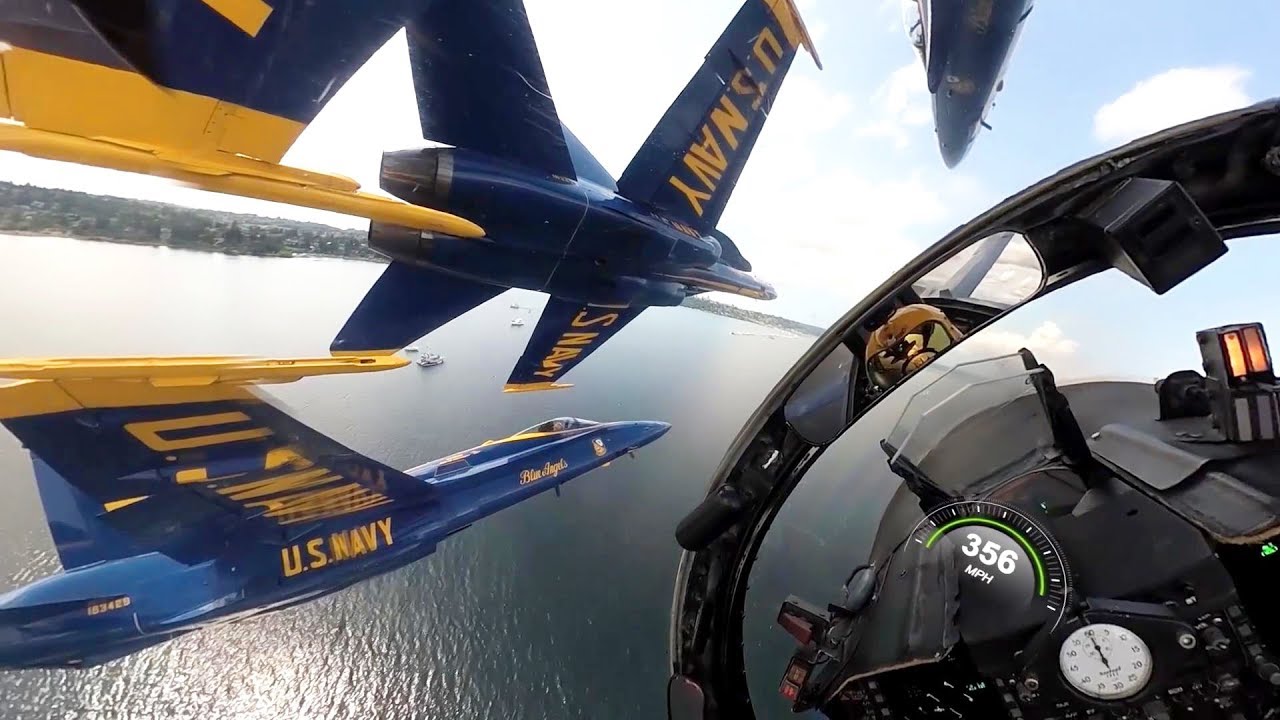Amazing Cockpit View! US Navy Blue Angels Team

The Blue Angels are the United States Navy’s flight demonstration squadron which was initially formed in 1946, making it the second oldest formal aerobatic team (under the same name) in the world.
The Blue Angels typically perform aerial displays annually in at least 60 shows at 30 locations throughout the United States and two shows at one location in Canada. The “Blues” still employ many of the same practices and techniques used in the inaugural 1946 season. An estimated 11 million spectators view the squadron during air shows from March through November each year. Members of the Blue Angels team also visit more than 50,000 people in schools, hospitals, and community functions at air show cities. Since 1946, the Blue Angels have flown for more than 505 million spectators.
How do the pilots of the Blue Angels handle the cramped and complex cockpit of their F/A-18 Hornets?
The US Navy Blue Angels team is one of the most iconic military demonstration squadron in the world, known for their astonishing aerial feats and precise maneuvers. The team’s pilots possess exceptional skills, as they perform daring stunts in their F/A-18 Hornet jets while flying at extreme speeds.
While watching the Blue Angels from afar is exhilarating, nothing beats the experience of being in the cockpit with the pilots. A cockpit view of the Blue Angels will give you an entirely different perspective of their incredible abilities.
To begin, the cockpit itself is a marvel of modern aviation. It is incredibly cramped, with limited room for the pilot to move. In addition to the pilot, there is a second person in the cockpit – the backseat pilot.
The cockpit is full of gauges, dials, and switches. It can be challenging to keep track of all the information displayed, but the pilots are well-trained to maintain situational awareness, even during intense maneuvers.
When you sit in the cockpit, you can see the world in a unique way. The sensation of flying at unimaginable speeds, pulling high-G turns, and executing tight rolls is exhilarating.
From the cockpit, you can also appreciate the team’s impeccable choreography. The Blue Angels’ pilots work together seamlessly, performing intricate maneuvers with precision timing. Watching the other planes in the squadron while performing a stunt gives a sense of the teamwork and trust involved in their flights.
The view is particularly breathtaking during the Blue Angels’ signature maneuver, the Diamond Formation. This formation is a tight flying pattern where four planes fly within just a few feet of one another in a diamond shape. The view from the cockpit as you fly in this formation is awe-inspiring.
One of the most incredible things about the Blue Angels’ cockpit view is the sound. The jet engines of the F/A-18 Hornet produce a deafening roar, and the sound reverberates throughout the cockpit. It’s a visceral experience like no other.
In conclusion, the cockpit view of the US Navy Blue Angels team is an experience of a lifetime. It offers a unique perspective of their incredible skills, choreography, and teamwork. It’s not for the faint of heart, but if you’re looking for an adrenaline rush, then there’s nothing quite like it. The US Navy Blue Angels team is an incredible display of aerial prowess that will leave you in awe.









Alaskan 12×16 Shed Tiny House – Living In Style On A Budget
A Day In The Life Of A Urine Drinker
Hydroplaning Dolphins
They told me gardening like This wouldn’t work, I didn’t listen
The Darkest Black on Earth? Why Scientists & Artists Want the World’s Blackest Substances